16.1 Art Inquiry: Art Mysteries
Learning Objectives:
To research and learn more about art mysteries.
Write a report that synthesizes your findings.
Prepare a presentation to share your findings with other learners.
Art images can challenge viewers to think more deeply about the social, cultural, and historical context of when the work was created. Understanding the artist’s motivation for painting a particular work can be a catalyst to exploring art from an interdisciplinary perspective. Sometimes clues as to why an artist chose to paint a particular subject or landscape cannot easily found and efforts by scholars and amateur investigators result in more questions than answers.
Research one of the famous art mysteries. What information can you find out about the artist and the painting? You can write a report, speech, or present a multimedia presentation of your findings.
Resources:
To read Art History’s 8 Greatest Mysteries please open the link here.
A Journey to the Oldest Cave Paintings in the World (Smithsonian American Art Museum SAAM)
Questions
1. Who created the Lascaux cave paintings? When were they discovered? What can we learn about the people who created these paintings?
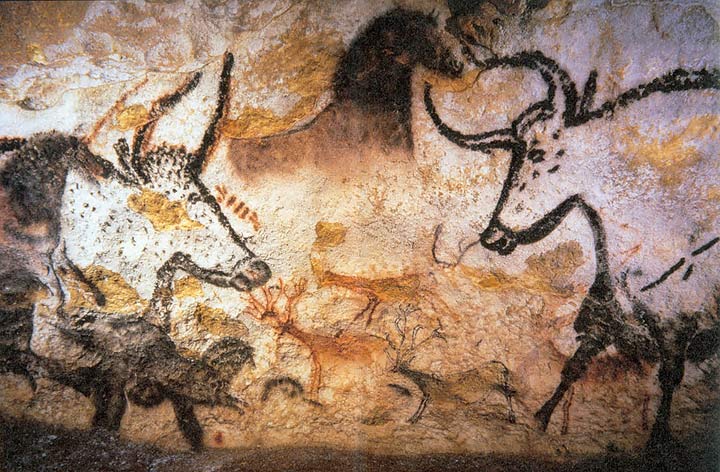
2. Jan van Eyck’s The Arnolfini Portrait is considered one of the most mysterious paintings of all time. Why? What symbols can you find in the painting? Who are the people featured in this striking double portrait? What information can you find about the painting and the artist?
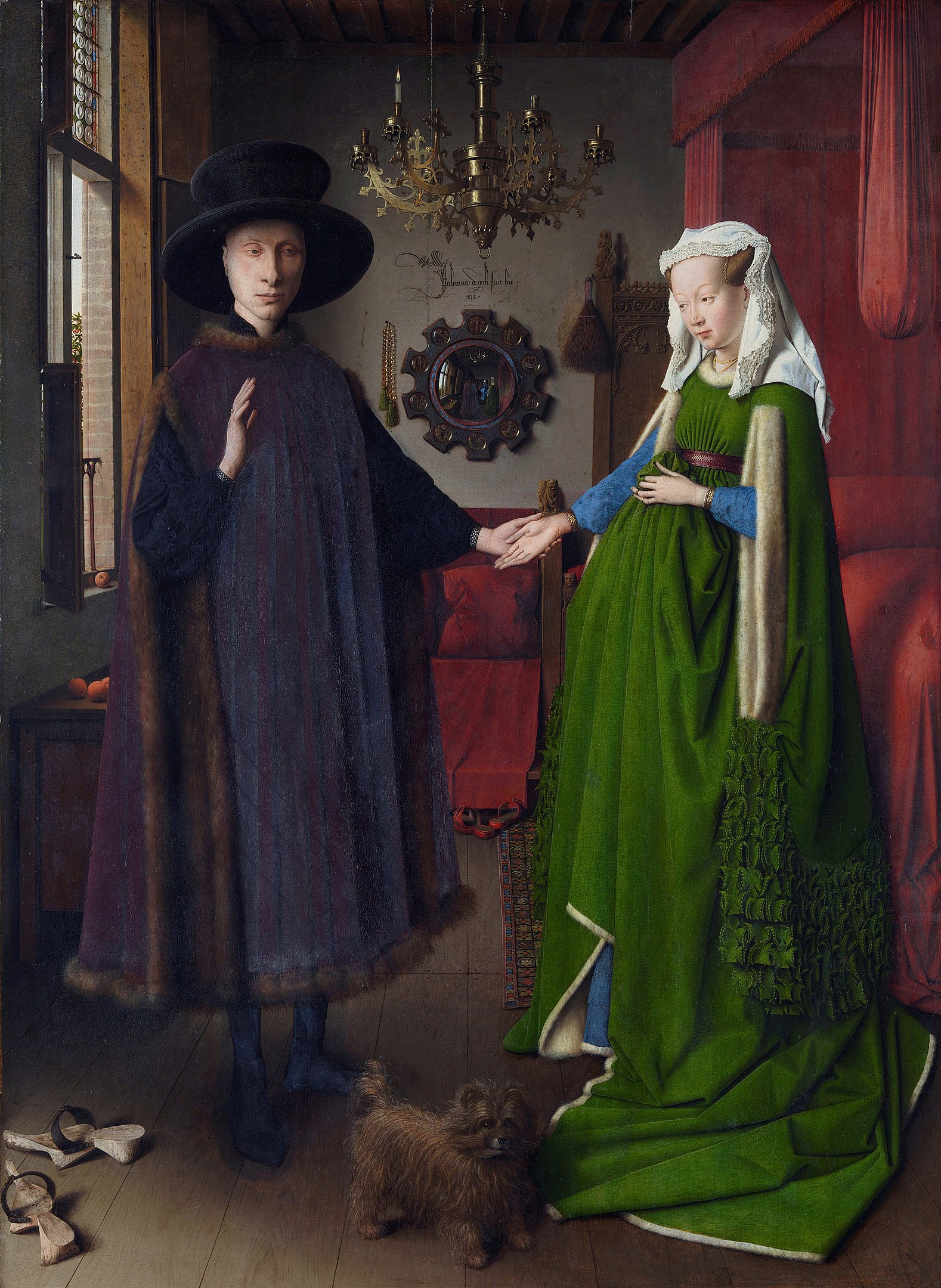
Do you agree that the Arnolfi Portrait is “full of mystery” (Lowes and Pickeral, 2013, p. 19)? To learn more about Jan van Eyck please open the link here.
3. Why is Leonardo Da Vinci’s The Mona Lisa so famous? What mystery or mysteries surround the painting?
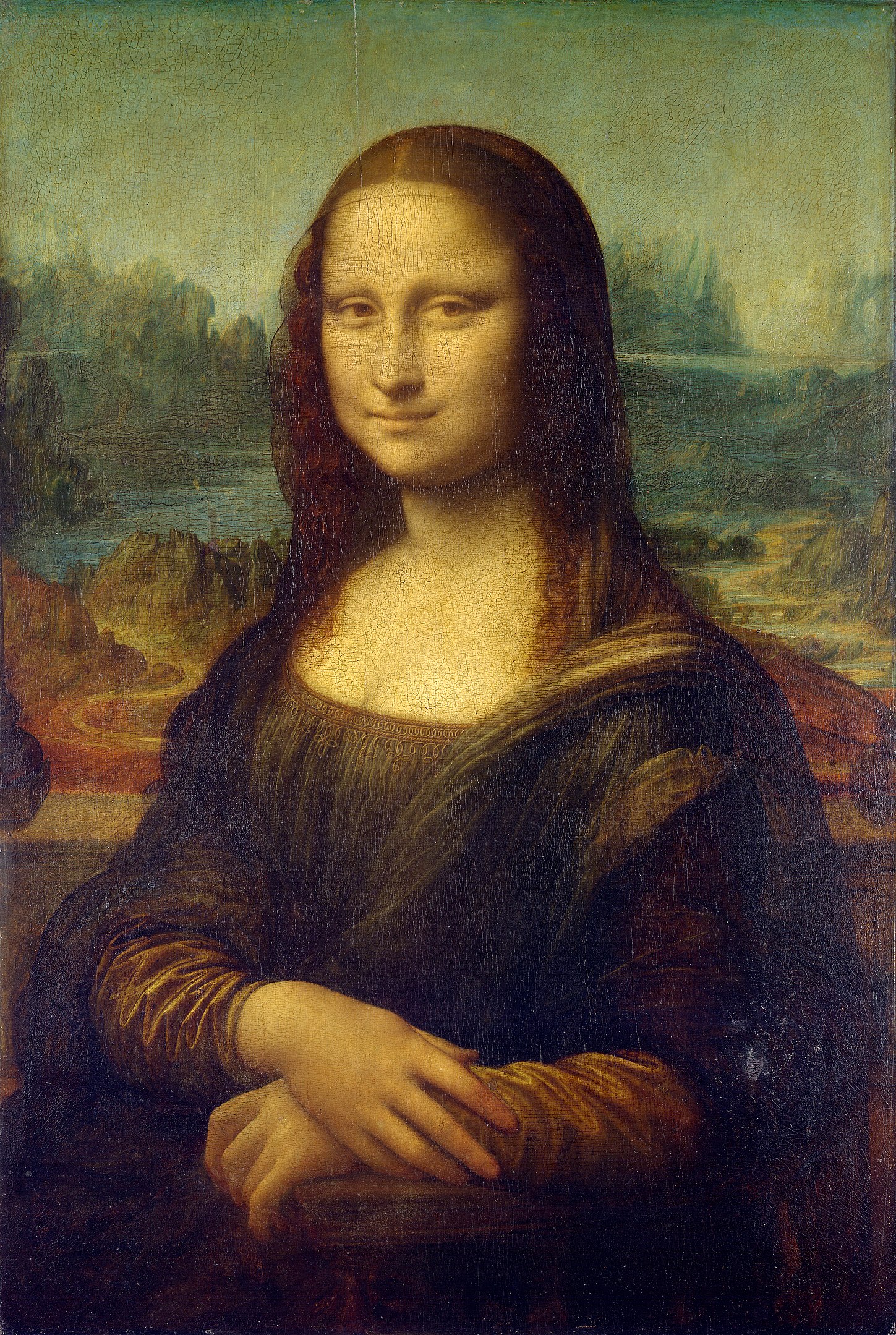
To learn more about the mystery of the Mona Lisa please open the link here
and here.
4. Some scholars think that Bosch’s Garden of Earthly Delights depicts the world after the Great Flood. Others think that the painting depicts different days of creation where God had separated the land from the waters and then created plants, animals, and people (Wenzel, 2011). What events may have inspired Hieronymus Bosch to create his fantasy images? To what extent was Bosch inspired by biblical scriptures? On what did he base his art images on? What is his message?
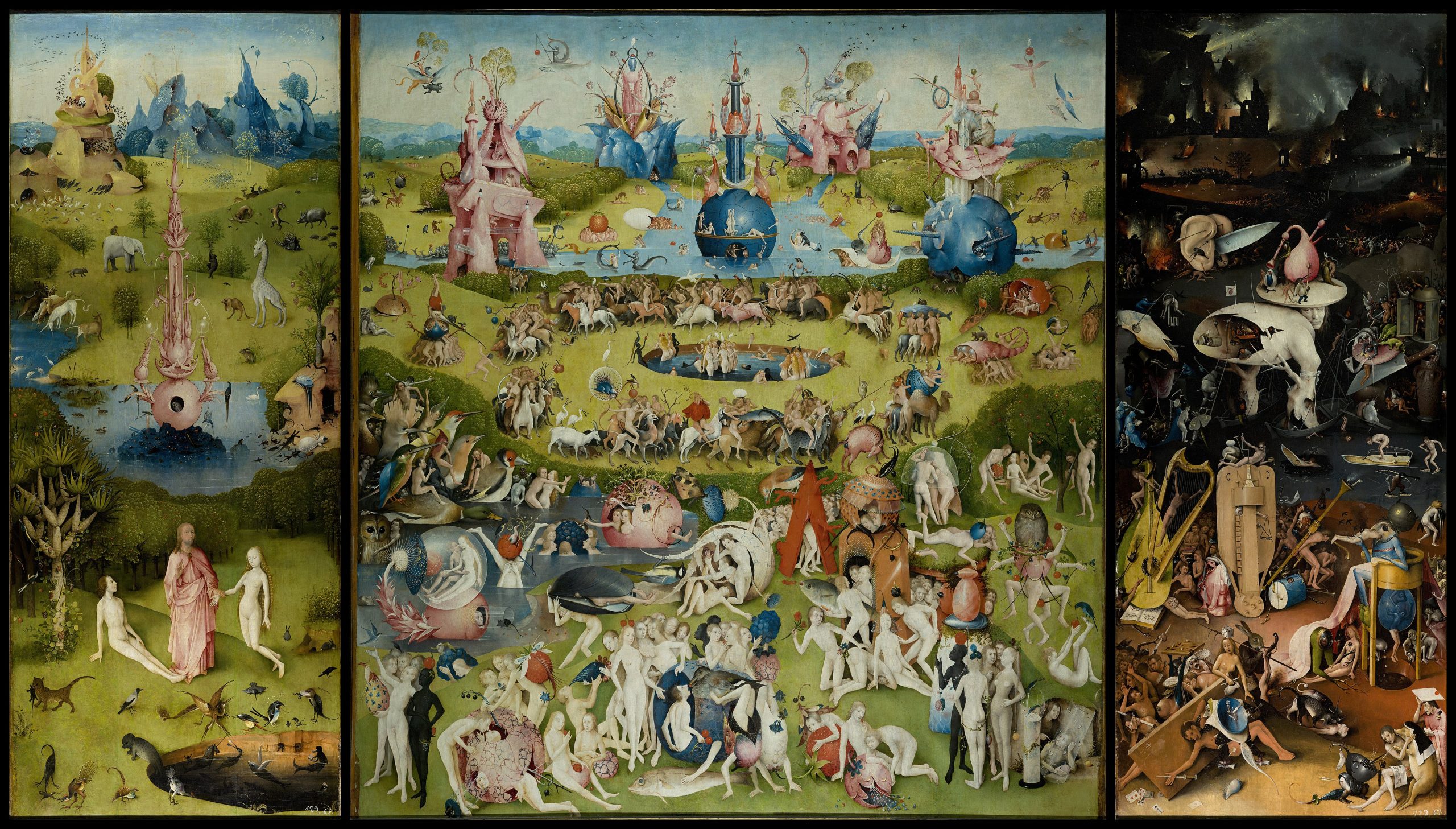
5. Was Vermeer really an early photographer? To learn more about Vermeer’s unique style of painting, please open the link here.
Johannes Vermeer was one of the great painters from the Netherlands. His precision art remains a source of curiosity and mystery. He had an uncanny ability to paint in a style that was similar to photography.
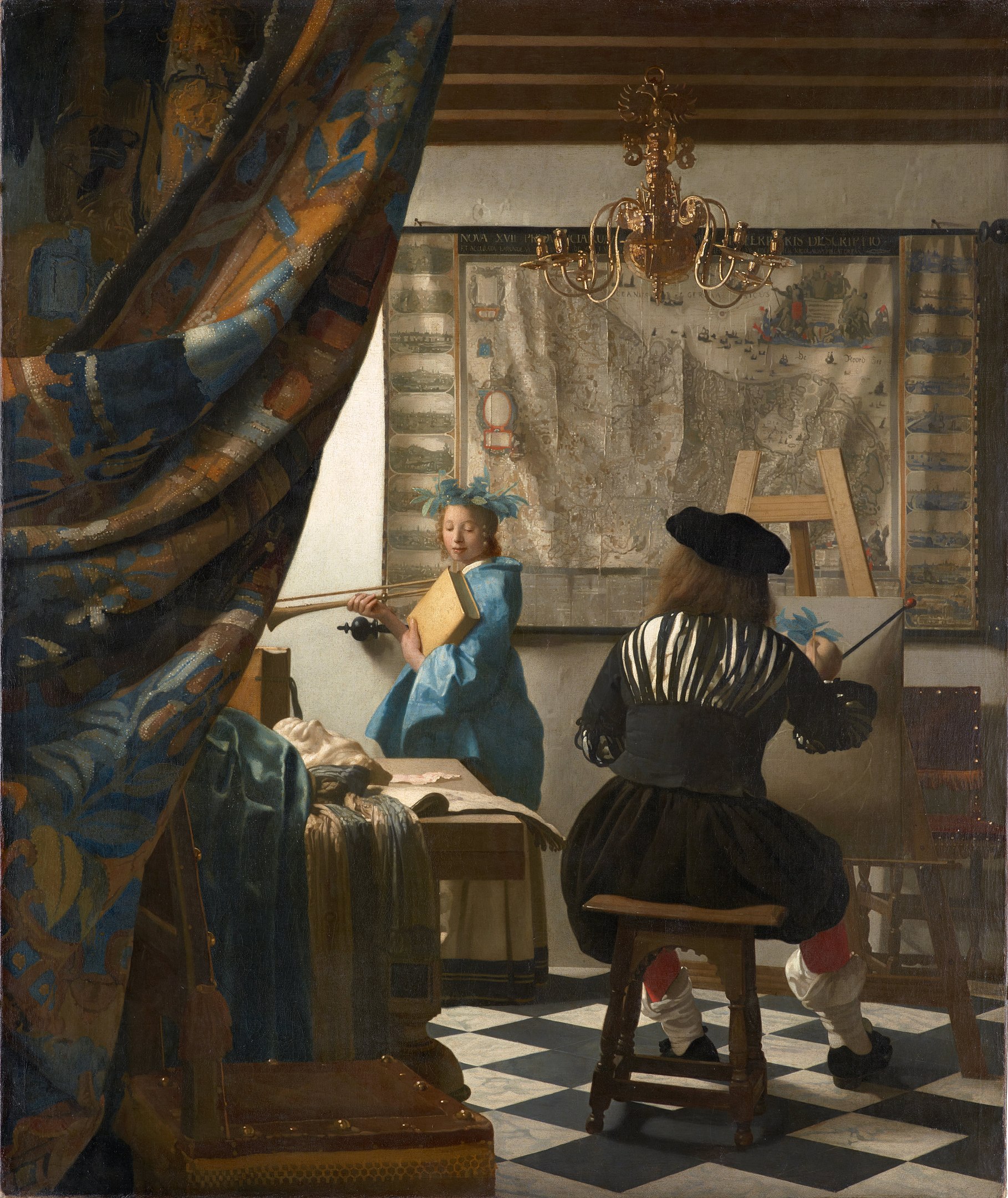
5. There are multiple versions of Isle of the Dead. Who or what was Böcklin trying to depict? Where is the setting? Some critics think that the painting depicts the ferry man Charon crossing the River Styx in the underworld from Virgil’s The Aeneid. Others look for alternative symbolism in the painting. Research the origins of this painting and learn more about the artist’s works and life.
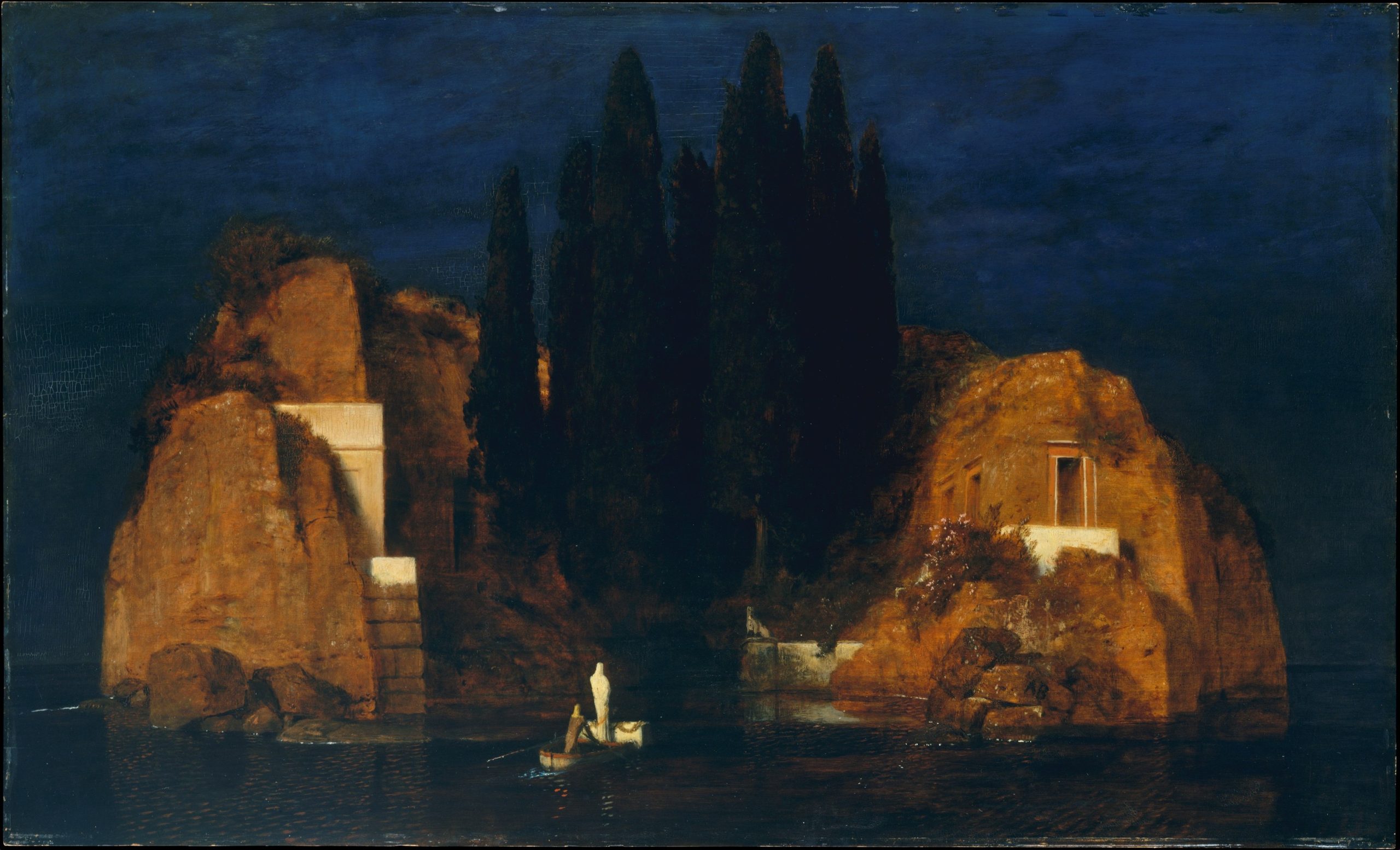
Courtesy: Reisinger Fund, 1926. “https://www.metmuseum.org/art/collection/search/435683” is licensed under CC0 1.0.
For more information about “Island of the Dead” by Arnold Bocklin, please open the link here.
*There are several versions of this painting in Basel, Switzerland, New York, and Leipzig, Germany.
Additional Sources
The Mysterious Places of Arnold Böcklin
Mystery of Easter Island Statues
The Mysterious World of Hieronymous Bosch.
The mystery of Vincent Van Gogh’s death.
Understanding Vermeer’s mysteries beyond “Girl with the Pearl Earring.”
Wenzel, A. (2011). 13 art mysteries children should know. Prestel.
What other art mysteries can you find that interest you?
artin Johnson Heade – [1], upload 2008, Public Domain, https://commons.wikimedia.org/w/index.php?curid=3686951
Key Takeaways:
In this book, you will come across many different styles of art. While there are many unique artistic styles and often there is a blending, integration, or overlap of varied artistic styles, the following styles briefly described below can be a guide to understanding some of the art images in this book. You can also delve more deeply into an artistic style that you find most interesting . Common to most artistic styles is the effort of the artist to make sense into a world often altered by revolutionary philosophical, socio-cultural, and political changes.
Exploring Artistic Styles
Research one of the artistic styles from below and create a collage of art images that best represent this style. Provide informative descriptions of each art images. You can also find a poem or related text that reflects the specific artistic style.
- Abstract: Originating in Europe in the late 19th century, abstract art in painting, design, and sculpture has a geometric design; it is simplified from its natural appearance. Hilma af Klint, Piet Mondrian and Joan Miro focused their art on basic abstractions of line, form, colour, tone, and texture.
- Abstract-Expressionism (1946-1960). Artists like Wassily Kandinsky and Jackson Pollock produces highly imaginary interpretations of people, animals, places, concepts, and themes. This style of art is known for its uniqueness, creativity, freedom of expression, emotional intuition, and spontaneity. The images in abstract expressionist art are not taken from the visible world. Expressive qualities such as dynamism, mystery, lyricism, and sensuousness are present in this style of art
- Cubism (1907-1914): Artists such as Lyubov Popova, Pablo Picasso, George Braque, and Ferdinand Leger were part of an avant-garde art movements in the early 20th century; this movement influence music, literature, design, and architecture. In Cubist art, the subjects are deconstructed, analyzed, and envisioned or reassembled in cubes and other abstract forms. The subject to the art is presented from multiple angles and perspectives. To learn more about the way Pablo Picasso’s style revolutionized art please open the link here.
- Expressionism (1900’s). In this artistic style, the expression of inner emotions and visions are highlighted with bold colours, abstract forms, and strong brushstrokes. Expressionism was an extension of the Impressionist movement in art. Painters such as Vincent Van Gogh, Emily Carr, Paul Gauguin, Jacques Rousseau, Edvard Munch, and Henri Matisse produced art works that reflected powerful emotional states. Rather than creating a life-like world, expressionist and post-expressionist painters created a world of feeling, spirit, and form. Cubism, expressionism, futurism, and post-expressionism, and other forms of abstract art were part of the “modernist movement” in art, architecture, philosophy, and literature in the first half of the 20th century. This movement reflected the growth of technology as well as the industrialization and urbanization that swept across nations. Painters like Georgia O’Keefe were among the leading artists in the modernist art movement in America. World War I and ongoing political tensions and conflict also influenced the subject matter in modernist styles of art. To read more about Modernism in Art please open the link here.
- Gothic (12th and 13th Century Middle Ages). -Gothic is a general term that applies to all art in the Middle Ages. Gothic churches and cathedrals such as the Chartres Cathedral, Notre-Dame in Paris, Durham Cathedral in northeast England, Westminster Abbey in London, and Canterbury Cathedral in southwest England are known for their grandeur and intricate stained glass work, jeweled ornamentation, sculptures, and vaulted ceilings. Gothic art included elements of Romanesque, Byzantine, and Islamic art. . Gilded panel paintings and richly decorated books and manuscripts were often on religious themes.
- Impressionism (1860s-19th Century): The emphasis on this new way of creating art focused on the effects of sunlight on landscapes, freedom of expression, and the “impression” of reality rather than an idealized or perfect life-like appearance that was prevalent in art in previous centuries. Artists such as Claude Monet, Mary Cassatt, Berthe Morisot, Edward Degas, Renoir, and Edward Manet were among the most well-known Impressionist painters To learn more about Impressionism please open the link here and to learn about Post-impressionism please open the link here.
- Realism (1848-1860)-Realist artists like Gustave Courbet and Jules Bastien-Lepage portrayed life as it really was; everyday life images of individuals at home or at work on farms and in fields or factories became the subject of well-known Realist works. Jean Francois Millet’s “The Gleaners” portrayed three peasant women gleaning stalks of wheat in a field. The American Realist painter Winslow Homer portrayed the daily life of individuals at sea or at work in their local communities.
- Renaissance (1200-1500). The Renaissance was a transformative time in art, architecture, science, literature, music, medicine, and all key areas of thought and creative expression. There was a revival of classical learning, an increased awareness of the natural world and a more complex view of human nature. The Renaissance followed the ornate Gothic period. Giotto, Leonardo da Vinci, Sofonisba Anguissola, Michelangelo, and Raphael produced vibrantly coloured paintings. Biblical scenes often included portraits where subjects evoked complex emotional states, scenes from classical Greek and Roman myths and legends, and contemporary life.
- Surrealism (1924-1945). This artistic style is known for its fantastic images could be expressions of dreams and the unconscious. (Kohl and Solga, 1996). Everyday objects (e.g. a train, clock, chair, hat, etc.) are re-configured and reimagined in surprising ways. Art movements such as expressionism, symbolism, and surrealism reflected the increasing interest in psychology, dreams, the unconscious, and paranormal experiences. Well-known surrealist artists include Marc Chagall, Rene Magritte, and Salvador Dali. “Surrealism aims to revolutionize human experience. It balances a rational vision of life with one that asserts the power of the unconscious and dreams. The movement’s artists find magic and strange beauty in the unexpected and the uncanny, the disregarded and the unconventional. At the core of their work is the willingness to challenge imposed values and norms, and a search for freedom” (The Tate Gallery, London, UK).
- Ukiyo-e (Edo Period) (1615-1857): Ukiyo-e means “pictures of a floating world (everyday life.” Inspired by Japanese folklore, myths and legends of warriors and heroes, natural landscapes and seasons, and the everyday life of Japanese people. Some of the prints featured idealized “floating worlds” of luxury and pleasure. Favourite subjects in ukiyo-e prints were kabuki theatre actors, beautiful courtesans, entertainers, and fashionable women. Some of the prints featured fantastical creatures such as ghosts and demons (Library of Congress, 2023). Other common ukiyo-e print figures were historic and mythical warriors and heroes, and fantastical creatures such as ghosts and demons. The Ukiyo-e was a style of artistic woodblock printmaking. Suzuki Harunobu, Utagawa Hiroshige, , Katsushika Hokusai’s Thirty-Six Views of Mount Fuji is a series of wood block prints that highlight richly illustrated landscapes with Mount Fuji as a focal point. The prints were collaborative endeavors of four experts that included the designer/artist, the engraver, the printer, and the publisher.To learn more about the Ukiyo-e style of printing making please open the Metropolitan Museum of Art link here.Other artistic styles include:
Resource: Kohl, M.A., & Solga, K. (1996) Discovering great artists: Hands-on art for children in the styles of the great masters. Bright Ideas for Learning.

